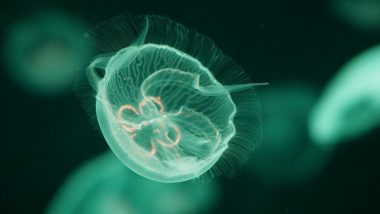Seoul, April 8: Authorities in South Korea were forced to shut down two nuclear reactors for the second time in three weeks due to an influx of sea salps. Nuclear reactors No. 1 and No. 2 of the Hanul Nuclear Power Plant in South Korea, both with a capacity of 950 MW, were shut down on April 6 after sea salps blocked water systems used to cool the two reactors, Sputnik News reported. It remains unclear when the units would restart. South Korea Reports 700 More COVID-19 Cases, 107,598 in Total.
Consequently, South Korea suffered lose of 1.9 gigawatts of energy generation. The two nuclear reactors had to be shut down earlier in March because of the salps. The shutdown lasted for nine days, costing South Korea millions of dollars. The Hanul Nuclear Power Plant has six reactors with a combined capacity of 5.9 GW. Artificial Sun 'KSTAR' in South Korea Sets New World Record by Lighting at 100 Million Degrees For 20 Seconds.
"There were no reactor shutdowns for marine organism influxes for the past 15 years. We are currently investigating why such influxes are happening again," an official at state-owned nuclear power operator Korea Hydro and Nuclear Power, or KHNP told S&P Global.
According to the Korea Institute of Ocean Science and Technology, population of salps, also known as transparent ocean dwellers, abruptly increased in March due to earlier-than-normal warm currents. The gelatinous creatures that look like jellyfish usually multiply their numbers by June.
"We can't say yet if the surge in salps is due to the changing climate or other factors," Youn Seok-hyun, a research scientist at the National Institute of Fisheries Science, was quoted as saying. "It should be regarded as a temporary phenomenon unless we see a continuous increase over the next decade," he added.
(The above story first appeared on LatestLY on Apr 08, 2021 12:38 PM IST. For more news and updates on politics, world, sports, entertainment and lifestyle, log on to our website latestly.com).













 Quickly
Quickly


